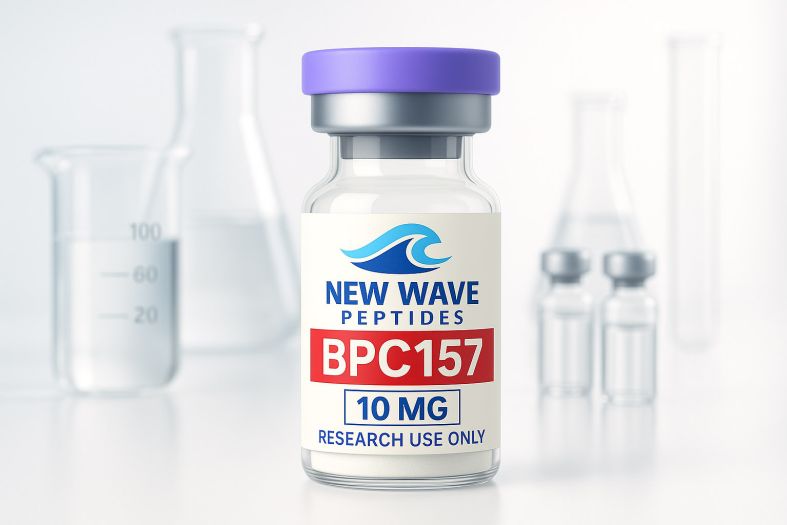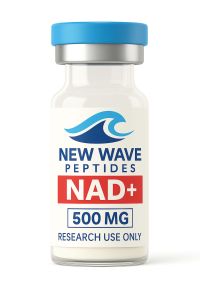
How Researchers Use BPC-157 in Lab Studies
BPC-157, a synthetic peptide derived from a protective compound found in the gastric juices of humans, has generated significant interest in the scientific community. Known for its potential role in supporting tissue repair, reducing inflammation, and influencing angiogenesis, this peptide is increasingly being studied in laboratory environments. This article explores how researchers are investigating BPC-157 and the typical methodologies used in controlled scientific settings.
Note: BPC-157 is sold strictly for research use only and is not approved for human consumption.
What Is BPC-157?
BPC-157 (Body Protective Compound-157) is a pentadecapeptide composed of 15 amino acids. It is based on a fragment of a naturally occurring protein found in human gastric juice, which has demonstrated protective effects in various preclinical models.
Importantly, it is studied exclusively in in vitro and in vivo settings and is not intended for human use.
Research Applications of BPC-157
Across numerous studies involving rodents and other animal models, BPC-157 has been observed to affect a range of physiological functions. Researchers are particularly interested in the following areas:
Tissue Repair and Wound Healing
BPC-157 is often studied for its role in accelerating the repair of muscle, tendon, and ligament damage. In controlled animal models, it has shown promising effects on cell migration and tissue regeneration.
Gastrointestinal Protection
As a peptide originally isolated from gastric protein, BPC-157 is frequently used in lab studies investigating its effect on ulcer healing, gut lining integrity, and inflammatory markers in the GI tract of rodents.
Angiogenesis and Blood Vessel Support
Some researchers focus on BPC-157’s potential to promote angiogenesis—the formation of new blood vessels. Studies have examined its interactions with nitric oxide pathways, VEGF (vascular endothelial growth factor), and endothelial function in animal models.
Neurological and Central Nervous System Research
BPC-157 has also been included in studies related to neural injury and recovery, including research on brain trauma, spinal cord damage, and peripheral nerve regeneration in rats.
Laboratory Handling and Storage
Proper handling of peptides like BPC-157 is essential for reproducible results. While protocols vary based on the nature of each research project, here are commonly observed practices in laboratory settings:
- Reconstitution: Researchers typically reconstitute BPC-157 with sterile bacteriostatic water or similar solvents.
- Storage: The lyophilized (dry powder) form of BPC-157 is usually stored at -20°C or colder to preserve integrity. Once reconstituted, it is often kept refrigerated and used within 20-30 days to maintain stability.
- Application in Studies: In rodent-based research, BPC-157 is commonly administered via subcutaneous or intraperitoneal injection, depending on the study design and target area.
Scientific Studies Featuring BPC-157
Although human trials are currently lacking, several well-documented studies provide insights into how this peptide is being investigated in the lab:
- Pećina et al. (2010): Studied the role of BPC-157 in tendon-to-bone healing in rats, showing accelerated recovery and tissue remodeling.
- Sikiric et al. (2018): Explored BPC-157’s ability to counteract NSAID-induced GI lesions and promote gut healing.
- Labudovic-Borovic et al. (2021): Assessed angiogenesis and vascular repair mechanisms influenced by BPC-157 in animal models.
Why Purity and Quality Matter
For researchers working with peptides, purity is paramount. Contaminated or degraded peptides can lead to inconsistent results and unreliable data. That's why every batch of peptides we provide are:
- Manufactured in ISO-certified labs
- Accompanied by a Certificate of Analysis (COA)
- Tested for ≥99% purity via HPLC and mass spectrometry
Final Thoughts: Advancing Research with Confidence
BPC-157 remains one of the most intriguing peptides under scientific investigation today. Whether your work involves studying cellular repair pathways, inflammatory response, or vascular regeneration, it presents exciting opportunities for deeper discovery.
At New Wave Peptides, we’re committed to supplying researchers with reliable, high-quality peptides supported by full transparency and rigorous testing. Explore our selection of lab-grade peptides today — and take your research further.
Note: All peptides sold on this site are intended for laboratory research only. They are not for human use, consumption, or therapeutic application.
Call to Action

BPC-157 is a synthetic peptide derived from a protective compound found in human gastric juice. It is composed of 15 amino acids and is commonly used in laboratory settings to study tissue repair, angiogenesis, and inflammatory processes in animal models.
No. BPC-157 is sold strictly for laboratory research use only. It is not approved by the FDA or other health agencies for human or veterinary consumption, treatment, or medical application.
In laboratory studies, BPC-157 is commonly reconstituted with sterile bacteriostatic water and used in rodent models to examine potential effects on tendon healing, gut protection, vascular development, and nerve regeneration. It is often administered via subcutaneous or intraperitoneal injection depending on study design.
Lyophilized BPC-157 should be stored at -20°C in a dark, moisture-free environment. Once reconstituted, it should be kept refrigerated at 2–8°C and used within a 20-30 days. Aliquoting the solution into sterile vials is recommended to avoid degradation from repeated freeze-thaw cycles.
Our BPC-157 is manufactured in ISO-certified facilities and tested to ensure ≥99% purity via HPLC and mass spectrometry. Each batch comes with a Certificate of Analysis (COA), allowing researchers to confidently use the peptide in precision-focused studies.


